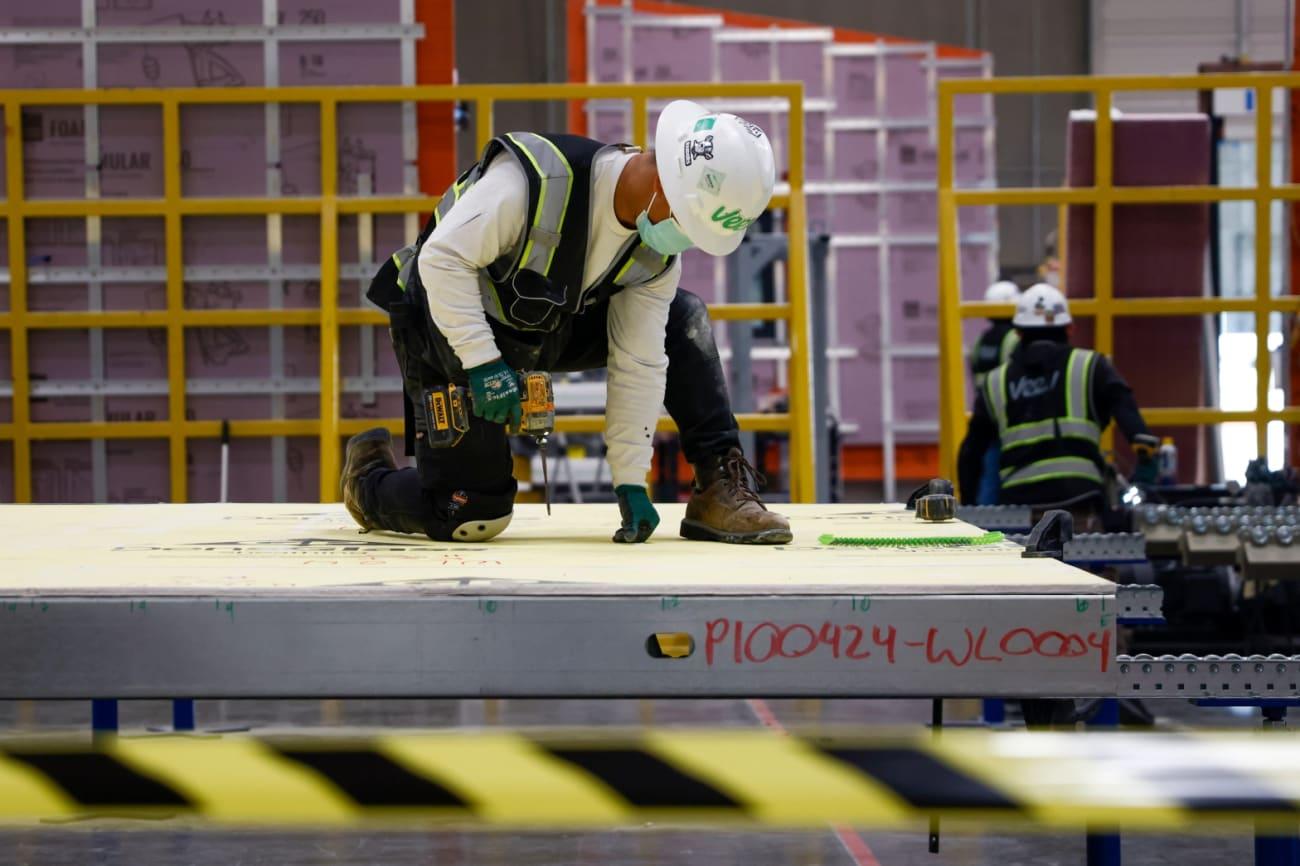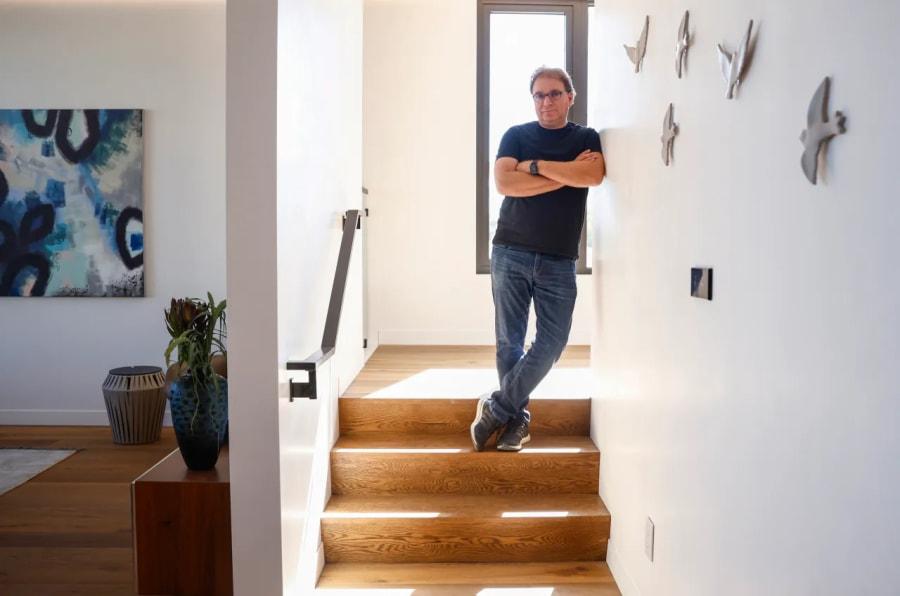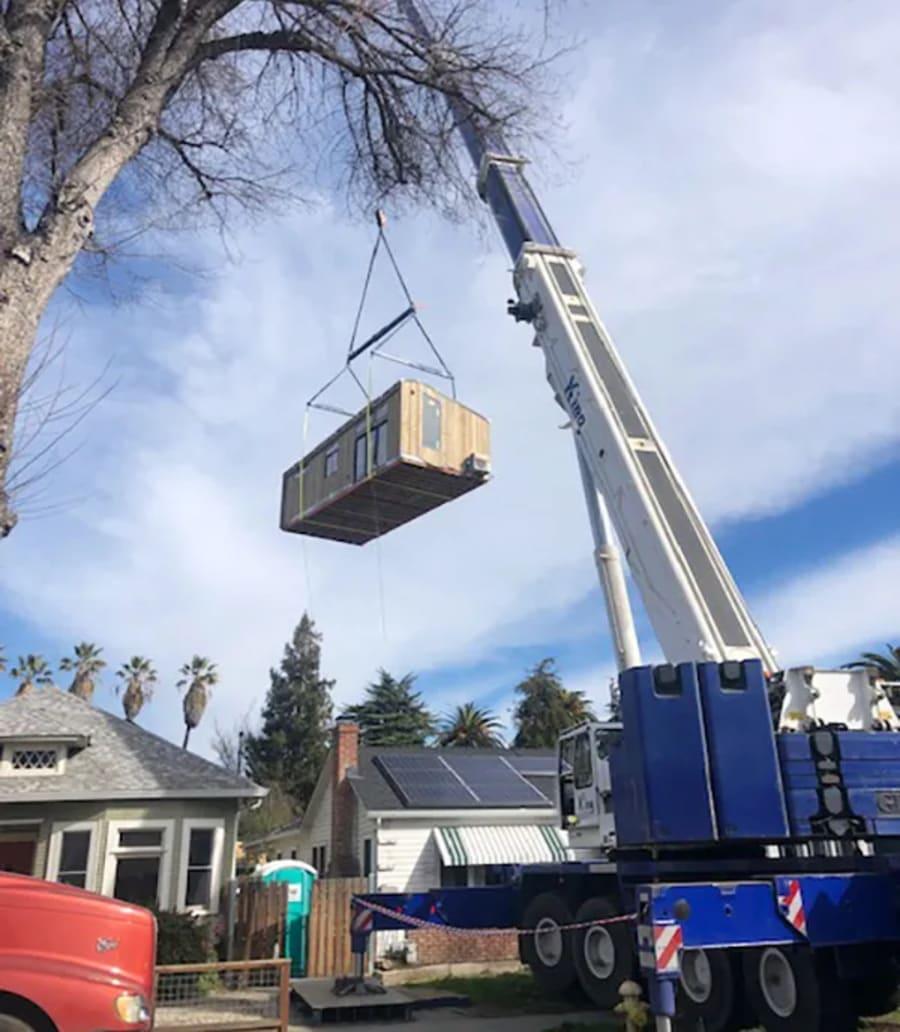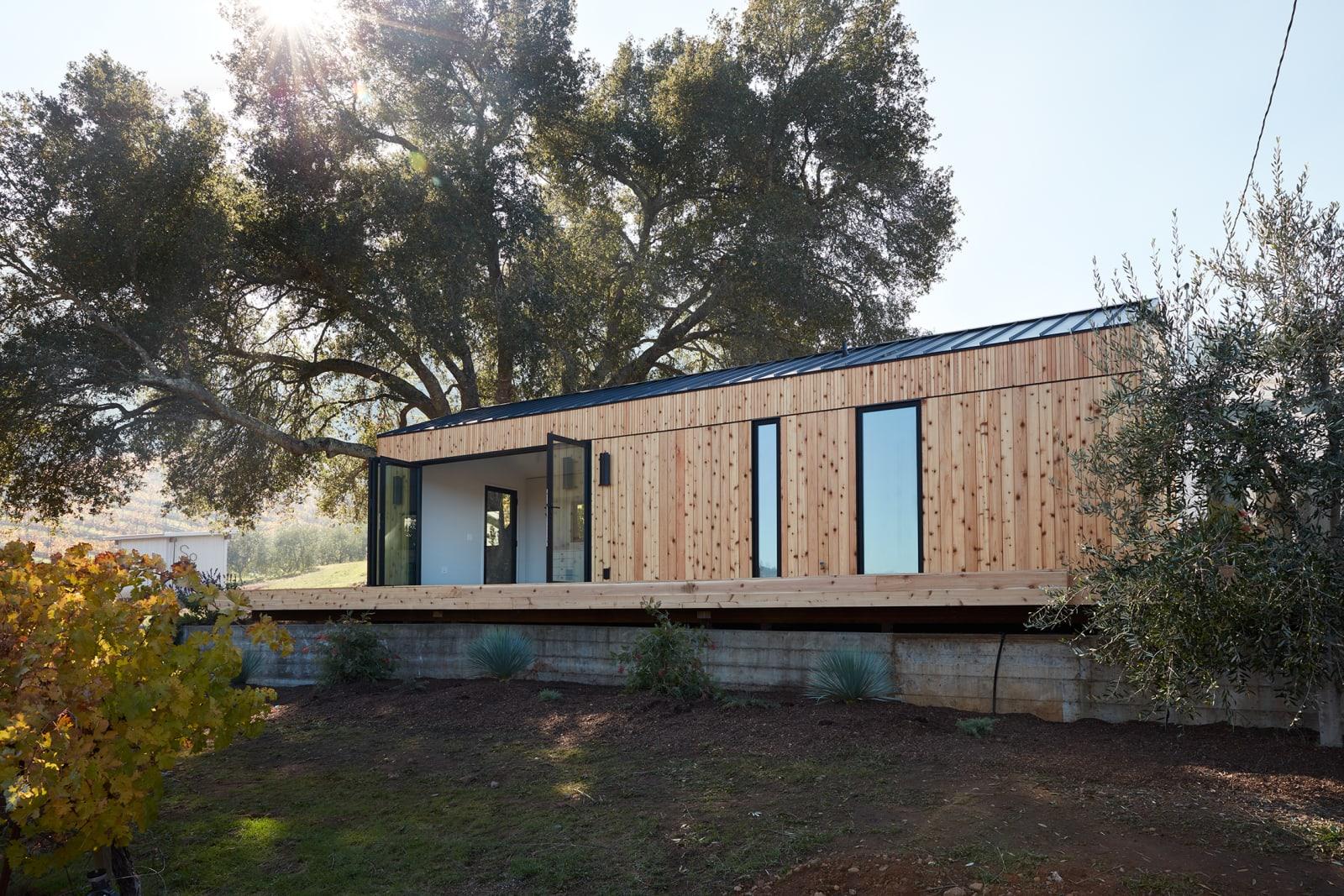As Bay Area’s single-family neighborhoods evolve, what comes next?
October 22, 2021 | The Mercury News | By Louis Hansen

SAN FRANCISCO CALIFORNIA – OCTOBER 14: A factory employee works at the Veev warehouse in Union City, Calif., on Thursday, Oct. 14, 2021. (Shae Hammond/Bay Area News Group)
Inside the Veev factory in Union City, rolls of recycled steel and stacks of white composite material are slowly turned into a most basic building block — walls.
Company CEO Amit Haller says the customization of these simple structures offers a nearly endless supply of design choices for creating new homes and apartments.
On a construction site, workers assemble the walls like a snap-together model, complete with plumbing, electrical systems, insulation and finished siding. The home or apartment is built in a fraction of the time it traditionally takes.
In a state with new housing laws knocking down single-family home restrictions in an effort to boost supply, is this what new home construction will look like?
“We need to shorten the time to construct a home. That’s where we can help,” said Haller, a supporter of California’s new regulations. “We see the home as a product.”
Making small, infill housing faster and cheaper to build is the bottom line for new construction in the ultra-expensive Bay Area, where land and construction costs top nearly every developed region in the world.

SAN FRANCISCO CALIFORNIA – OCTOBER 14: Amit Haller, CEO of Veev, stands for a portrait in San Carlos, Calif., on Thursday, Oct. 14, 2021. (Shae Hammond/Bay Area News Group)
Factory home builders see bold new opportunities in a sweeping new state law signed this fall, SB 9. Beginning Jan. 1, the state will allow many owners of single-family homes to build duplexes or subdivide and develop their properties. The rise of factory-built housing, either in modules, flat panels or a combination, could become a go-to solution for homeowners looking to enhance their lots.
State lawmakers say SB 9 is part of a strategy to build new homes and small apartments in existing neighborhoods in a housing-starved state. It also seeks to break down more than a century of housing policy based on segregation — keeping apartment buildings and poor, minority renters out of White neighborhoods.The new law streamlines the development process, limiting environmental challenges and local government control. It allows up to two duplexes on a single-family lot.
The basic pitch by developers of factory-built housing: Homebuilding is a messy, complex and expensive journey. Modular construction — inspected and permitted in a factory, easily configured, and much faster and usually cheaper than traditional building — takes some of the cost and many of the headaches away from homeowners.
Redwood City startup Abodu expects more interest in their turnkey installation of in-law units.
“It really is just an extension of our business,” said Abodu co-founder John Geary. “It’s an opportunity for us, but it’s also an opportunity for single-family homeowners across the state.”
The company ships modular studios, and one- and two-bedroom ADUs on flatbed trucks, then hoists the pre-assembled units into back and side yards with cranes. The startup has secured pre-permitting clearance from 50 California cities, including many in the Bay Area.

A large crane installs a backyard unit, which was built by Abodu, in Jeff Thomson’s backyard on Feb. 4, 2020, in San Jose, Calif. (Courtesy of John Geary of Abodu)
One possible SB 9 development, Geary said, would be adding a pre-permitted, two-bedroom ADU to a property, then having Abodu handle the administrative process of splitting the lot. Speed is key — site work and installation can be handled in as little as a month.
In Southern California, Plant Prefab CEO Steve Glenn said the demand for factory-built housing continues to grow. The Rialto-based manufacturer is planning to add a third factory.
New construction under SB 9, he said, “requires pretty custom, pretty flexible solutions.” Some city rules still apply to guide the size and appearance of a new home or duplex. Plant Prefab has built multifamily homes, and expects the demand to pick up, he said.
But experts don’t necessarily expect an immediate rush of development.
A UC Berkeley study predicted SB 9 would “modestly accelerate the addition of new units” in established neighborhoods, usually through dividing a property and developing a second, single-family home. Researchers estimated the law could spur the construction of as many as 700,000 new homes and apartments, although actual development is expected to fall far short of that number and take years.
Ben Metcalf, managing director of the Terner Center for Housing Innovation at UC Berkeley, said cities will have to set up a process for development applications, similar to the process for permitting ADUs. The state also has a long-running shortage of construction workers, which could slow even the new type of residential development. More modular factories will likely need to be built to keep up with demand, he said.

SAN FRANCISCO CALIFORNIA – OCTOBER 14: A factory employee works at the Veev warehouse in Union City, Calif., on Thursday, Oct. 14, 2021. (Shae Hammond/Bay Area News Group)
But Metcalf sees opportunities for factory-built homes and believes manufacturing capacity can ramp up in the next three years. Rising rents and home prices likely mean institutional investors will explore the market, knowing intense demand remains in the Bay Area and throughout the state. Veev brings a Silicon Valley approach to its manufacturing. Haller has an engineering background, and the company’s vice president of fabrication and about half the factory workers come from Tesla.
The Union City factory still has the capacity to ramp up production. Workers and machines piece together walls made of two simple materials — steel and high-performance surface panels made of a composite, non-porous material that can be shaped and designed into wall paneling, custom closets, sinks, bathtubs and any number of other household necessities.
The company has completed projects in San Jose, Menlo Park and Palo Alto, and is working on a collection of townhomes in San Carlos. Four of the new homes have already been sold for a little over $2 million each. And Haller said panel construction can be scaled up from small backyard units to six-story apartment complexes.
Big developers are already betting on factory-builds. Veev received a $97 million investment from home building giant Lennar. “It’s really,” Haller said, “a plug-and-play system.”
